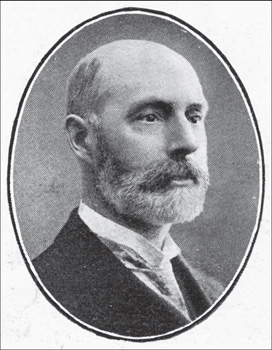Butler Wood
Library visionary and champion of reading for all
social groups, Butler Wood was a prize winning
student at the Bradford Mechanics’ Institute in
1872.
 Son of a bookseller, Butler Wood was born in Bradford in
1854. He developed an interest in art and literature in
his father’s bookshop where he spent much time of his
formative years. At his retirement he revealed that the
Penny Dreadfuls had instigated his interest, and whilst 8 or
10 years old he had read Dick Turpin’s Ride To York, Springheeled
Jack and Jack The Ripper.
Son of a bookseller, Butler Wood was born in Bradford in
1854. He developed an interest in art and literature in
his father’s bookshop where he spent much time of his
formative years. At his retirement he revealed that the
Penny Dreadfuls had instigated his interest, and whilst 8 or
10 years old he had read Dick Turpin’s Ride To York, Springheeled
Jack and Jack The Ripper.
His formal education began at Walker’s Factory School
where he worked as a half timer alongside his woolcomber
grandfather. Later, at the Bradford Mechanics’ Institute, he
excelled at reading and dictation. The Bradford Mechanics’
Institute Annual Report of 1872 states that he won equal
first in the annual ‘Reading and Dictation, Higher Class’
examination, and was awarded the Complete Works of
Robert Burns. He also won first prize for Dictation, and was
awarded the Christian Philosopher by Thomas Dick.
In 1874, Butler came across Thomas Hardy’s Far From
the Madding Crowd serialised in the monthly Cornhill
Magazine. When it was finished, he cut out all the
instalments he had waited eagerly for, and had them bound
together. This was to become one of his most treasured
possessions.
Butler discovered the library at the Zion Chapel in Bridge
Street aged 14. In 1875 aged 21, he was appointed Sub
Librarian to Charles Virgo at the Free Library. The Library
moved to a new location in 1878 and an Art and Museum
Gallery was opened on the top floor in 1879. Butler was
appointed Bradford’s Chief Librarian and Secretary in 1884,
with the salary of £150 per annum, and the City Art Gallery
was added to his responsibilities in 1885.
He was an innovative Librarian, and a champion of free
book reading for all social groups, saying that libraries “made it possible for all to lift themselves out of the
humdrum surroundings of life and project themselves into
the realms of imagination by means of the printed book.”
In his 50 years, he was the main instigator to increase the
number of borrowers from 4,150 to 31, 600. He was also
passionate about setting up smaller additional branch
libraries, and increased 7 library departments to 31 and he
was responsible for City Art Galleries Cartwright Hall and
Bolling Hall. He increased the staff from 14 to 112 staff,
book numbers from 23,000 to 251,198 and annual issues
increased from 151,000 to 1, 553,000.
Butler also introduced many new ideas to the Library,
including Sunday opening 2pm to 8pm in 1884, electric
light in 1890, the first municipal building to be lit by a
council electricity supply, a Braille book collection in 1892, a
travelling library in 1902, the card catalogue in 1905 and a
foreign fiction section in 1907.
A testament of the Bradford Telegraph in 1911, stated: “The reference library is so thoroughly organised that the
visitor may go with but a vague idea of his quest and be
put promptly in touch with the authorities he needs. ... The
reference department has been so copiously and judiciously
augmented in its resources as a storehouse of information
that it is of the highest utility to the student poring over
his task, the local politician looking up authorities, and the
more solid man engaged upon book research. The patents
department is of rare commercial value”.
Butler died in 1934 aged 80.
Photograph from 1904 Bradford Exhibition Souvenir